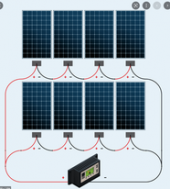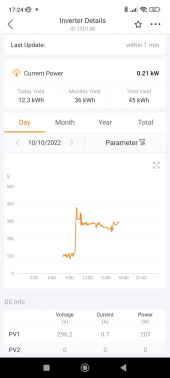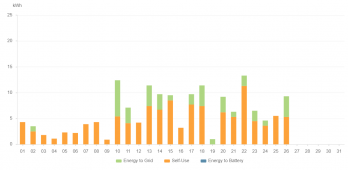It kicks in every day with 100v or so.You originally linked to this inverter, the S6-GR1P5K, which that reseller claims has a 60V startup voltage. But that model on the Solis web page shows 120V startup. I tend to believe the OEM web page. But voltage data you showed earlier never hit 120V, so how did it start up? Hmmm. Maybe it takes a second or two for logging to kick in after startup.
Isc for your panel is 13.68A at STC. Two panels in parallel would be 27.36A, which as you note exceeds that 17.2A spec. The S6-GR1P5K you linked earlier has a higher 22A Isc spec, but that's still not enough to parallel two of your panels. So you are limited to 1P strings. You can have two such strings, one on each MPPT. Since you only have one MPPT input hooked up, it implies 10S1P. But your voltage readings look like 3S1P.
Yes, you'd need at least 5 of your panels in series for 120V startup. I'd still prefer two 5S1P strings over a single 10S1P. Better to drag 5 panels down when one gets shaded than to drag all 10 down. But again, you only have a single string hooked up. And the voltages from that string are consistent with three panels, not 5 or 10. So something is wrong, we just don't know what.
I don't see any "best day" data in comment #39. But steady voltage and low current is what you get when the sun is low, or it's cloudy, or one panel in the string is shaded, etc. MPPT algorithms adjust voltage to maximize power, but due to the way panels work the max power point voltage tends to be pretty steady during the day (unless you see wild temperature swings or something). The MPP current tends to vary over a much wider range.
Once the installer calls looking for the money I will ask him to come here and review all the set up. I produced 2.3kwh others at least twice that......








